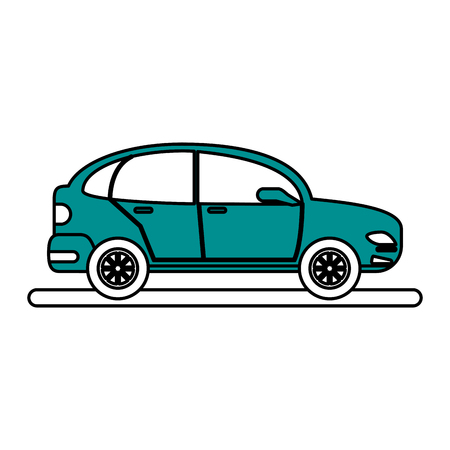1. Understanding Indian Road Conditions
India’s road landscape is a unique mix of bustling metropolitan streets, narrow village lanes, and unpredictable highways. From the crowded gullies of Old Delhi to the potholed bylanes of rural Maharashtra, every journey throws up its own set of challenges. The daily grind for most Indian commuters means navigating through bumper-to-bumper traffic, sudden road diversions, unmarked speed breakers, and even the occasional wandering cow or street vendor. These conditions demand more than just a comfortable vehicle—they require adaptability and resilience from both driver and car. Whether you’re considering a sedan or an SUV for these roads, it’s important to weigh how well each vehicle type can handle India’s diverse terrain, weather fluctuations, and the constant dance with fellow motorists, autos, bikes, buses, and trucks. In this context, understanding the nuances of Indian road conditions becomes the first crucial step in making the right choice between a sedan and an SUV for your daily drive or those long highway journeys across states.
2. Driving Comfort and Experience
When it comes to Indian traffic, the driving comfort and overall experience can differ greatly between sedans and SUVs, especially during long city commutes or highway journeys. Lets compare these two popular vehicle types with a focus on ride quality, seating comfort, and driving pleasure—elements that matter most to Indian car owners.
Ride Quality Comparison
| Aspect | Sedan | SUV |
|---|---|---|
| Suspension Comfort | Smoother on well-paved city roads; absorbs minor potholes efficiently | Handles rough patches and broken roads better; feels more stable on uneven surfaces common in Indian cities |
| Seating Position | Lower seating, giving a car-like feel and better aerodynamics | Higher seating offers commanding road view—an advantage in Indian traffic chaos |
| Cabin Space | Usually more comfortable for 4 adults; rear seat legroom may be limited in compact sedans | More headroom and shoulder space; easier ingress/egress for elders and children—important for Indian families |
| Long Drive Fatigue | Better for long highway runs due to lower centre of gravity; less body roll | Can get tiring due to upright seating but newer models offer improved ergonomics for lengthy trips |
City Commute vs Highway Travel: Driving Pleasure
Sedans: In congested city conditions like Mumbai’s Western Express Highway or Bengaluru’s Outer Ring Road, sedans are nimble and easy to handle. Their compact size helps with tight U-turns and squeezing through small gaps—crucial for daily office-goers. On highways such as the Delhi-Agra Yamuna Expressway, sedans deliver a planted feel at higher speeds, making them ideal for long solo or couple drives.
SUVs: For cities with unpredictable road quality—think monsoon-ravaged streets in Chennai or patchy lanes in Pune—SUVs provide reassurance with their higher ground clearance. The elevated stance is also a boon when navigating waterlogged areas or unmarked speed breakers. On highways, modern SUVs have improved stability but may not offer the same sporty drive feel as sedans.
What Indian Drivers Say (Anecdotal Insights)
- Kolkata commuter: “My sedan glides over smooth stretches but struggles with sudden craters after heavy rain.”
- Pune family man: “Our SUV keeps everyone comfortable during weekend getaways—even my elderly parents find it easy to enter and exit.”
- Bengaluru techie: “For my daily 20km commute, the compact sedan is just right—zippy in traffic jams.”
The Verdict on Comfort & Experience
Sedans excel in urban environments with good infrastructure and for those prioritising driving pleasure. SUVs, meanwhile, cater to the diverse needs of Indian families dealing with challenging roads or planning frequent outstation trips. Ultimately, your choice depends on your daily route, family requirements, and personal comfort priorities.

3. Maneuverability in Urban Traffic
When it comes to maneuvering through the maze of Indian city roads, the practicality of your car becomes a top priority. Sedans generally have an edge in this aspect due to their more compact dimensions and lower turning radius. Whether you are weaving through bustling bylanes of Mumbai or negotiating the endless traffic jams in Bengaluru, sedans make darting in and out of tight spots far less stressful. Their relatively lighter steering and agile handling allow drivers to squeeze through narrow lanes and quickly grab that elusive parking spot without much fuss.
On the other hand, SUVs tend to be bulkier, which can make them challenging when navigating India’s infamous congested streets. Finding parking for a full-sized SUV in busy markets or residential colonies can often feel like winning a lottery. However, many modern SUVs now come equipped with advanced parking sensors and rear cameras, which do help ease the process somewhat. Still, their wider bodies and higher stance may make you think twice before attempting that tricky parallel park on a crowded Delhi street.
In summary, if your daily grind involves frequenting old city areas with cramped roads or if you stay in metros where every inch of space counts, a sedan might offer better maneuverability and peace of mind. But if you’re willing to compromise a bit on agility for a commanding view and road presence, then an SUV could still be managed with some patience and practice.
4. Ground Clearance and Handling Potholes
When you talk about daily driving in India, ground clearance becomes a major factor, especially with our notorious speed breakers, deep potholes, and roads affected by heavy monsoon rains. Sedans and SUVs offer very different experiences here, and your choice can make or break your comfort on Indian roads.
Ground Clearance: The Real-World Impact
Indian city and rural roads are unpredictable—one minute you’re cruising smoothly, the next you’re tackling a surprise crater or an unmarked speed breaker. Here’s how sedans and SUVs compare when it comes to ground clearance:
| Aspect | Sedan | SUV |
|---|---|---|
| Typical Ground Clearance | ~165 mm | ~200 mm or more |
| Pothole Handling | Risk of scraping underbody; careful driving needed | Easily glides over most potholes; less worry about damage |
| Speed Breakers | Need to slow down considerably; chance of touching bottom if loaded | Takes most speed breakers comfortably even with full load |
| Monsoon Roads/Flooded Streets | High risk of water entering cabin or engine bay in deep water | Better suited for wading through waterlogged areas |
Long-Term Driving Experience on Indian Roads
If your daily commute involves crossing poorly maintained roads, village tracks, or stretches that become mini-rivers during the rains, an SUV’s high ground clearance is a blessing. You won’t need to think twice before taking those sharp turns or sudden detours. On the other hand, sedans demand extra caution—you’ll find yourself slowing down and planning every move to avoid damaging the underbody or getting stuck.
Conclusion: Practicality vs. Comfort
In the context of ground clearance and handling potholes, SUVs clearly have the upper hand for Indian conditions. While sedans might offer a smoother ride on perfect tarmac, real Indian traffic throws up enough surprises that having extra height is often worth it for peace of mind and long-term maintenance savings.
5. Fuel Efficiency and Maintenance Costs
When it comes to Indian roads and everyday commuting, fuel efficiency is a major deciding factor for most families. Sedans typically offer better mileage as compared to SUVs, thanks to their lighter build and aerodynamic design. For instance, popular sedans like the Maruti Suzuki Dzire or Honda City often deliver upwards of 18-20 km/l in city conditions, which is highly attractive given the rising petrol and diesel prices across India. On the other hand, SUVs—especially those with larger engines and heavier frames—tend to consume more fuel, with average figures hovering around 12-15 km/l for compact models and even lower for bigger ones.
Maintenance costs also weigh heavily on daily budgets. Sedans usually have lower service expenses due to simpler mechanics and more affordable spare parts. Regular servicing of a sedan at an authorised service centre is generally less expensive than that of an SUV, which might require costlier components and specialised attention, especially if its a four-wheel-drive model. In cities like Mumbai or Bengaluru, where bumper-to-bumper traffic and frequent stop-and-go driving are the norms, these recurring costs quickly add up.
For many Indians who use their vehicles primarily for commuting within city limits, dropping kids at school, or making quick trips to the market, the sedan’s combination of higher fuel efficiency and lower maintenance is a strong advantage. However, if your lifestyle involves frequent road trips to hill stations or rural areas with rough terrain, the higher service bills of an SUV may be justified by its versatility and ruggedness. Ultimately, aligning your choice with your daily driving pattern and budget constraints is key in making the right decision between a sedan and an SUV for Indian traffic.
6. Desi Family Needs and Luggage Space
When it comes to Indian family life, space is always at a premium. Our typical desi families rarely travel light—think about the luggage for a shaadi, or the endless tiffins and bags for a long road trip from Delhi to Manali! Here, SUVs clearly pull ahead with their flexible seating arrangements and massive boot capacity. The higher roofline and foldable seats in most SUVs mean you can easily pack in everything from cricket kits to grocery sacks after a big monthly shopping run. Sedans, while comfortable and stylish, often struggle with limited trunk space, especially when you are carrying both family members and their belongings. The rear seat of a sedan can get cramped during long journeys if you try to squeeze in extra bags. For big joint families or those who love spontaneous outstation plans, the SUV’s versatility makes it the more practical choice. Whether it’s a weekend drive to grandma’s place or a vacation to Goa with friends, an SUV simply adapts better to our Indian way of travel. In short, if your car is going to be the chariot for all your desi adventures, an SUV definitely matches our unique family needs and keeps everyone comfortable—even after hours on the highway!

